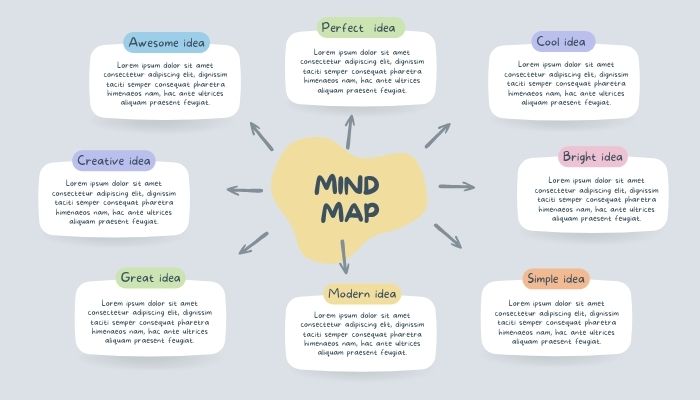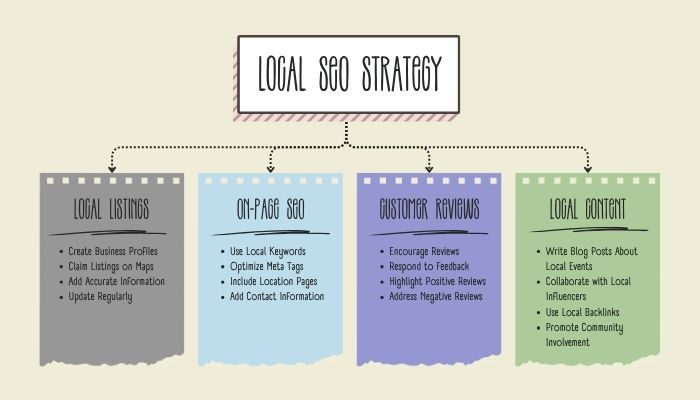Introduction of On-page SEO tips
SEO (search engine optimization) has become an integral practice in digital marketing, helping websites reach their intended audiences effectively. One key aspect of SEO is on-page optimization – optimizing individual pages of a website so as to increase their rankings on search engine results pages – something every website must strive to master if its goal is increased visibility on search engines like Google and other similar services.
On-page SEO comprises several components, from keyword optimization and content structure to user experience and mobile friendliness. In this article we’ll outline proven on-page SEO tips designed to boost rankings, drive more traffic and ultimately increase online success for any business – regardless of their experience in SEO or their current digital marketing campaigns. These actionable insights can make a real impactful statement about the quality of their digital marketing initiatives.
1. Keyword Research: Laying the Foundation for Success
To get the most from optimizing your content, conducting extensive keyword research is absolutely essential. Keywords are at the core of SEO as they represent terms and phrases your target audience searches for; selecting and including them into your content helps search engines understand its subject matter and relevance to user queries.
Key Steps for Effective Keyword Research:
- Tools such as Google Keyword Planner and SEMrush can help identify high-volume, low-competition keywords.
- Focus on long-tail keywords as they tend to offer higher conversion rates and reduced competition.
- Analysing competitors’ keywords to see what’s working in your industry.
- Consider search intent when developing content – be it informational, transactional, or navigational. Tailor your content accordingly.
Focusing on selecting keywords ensures that your content is optimized for both search engines and user intent, increasing your chances of ranking higher on search engine result pages (SERPs).
2. Optimize Title Tags to Increase Visibility
Title tags are one of the key on-page SEO elements, providing both search engines and users an idea of the page’s contents. An optimized title tag can significantly boost click-through rates (CTR) and search engine rankings.
Best Practices for Title Tag Optimization:
- Start with placing your primary keyword near the start of the title tag.
- Stay within 50-60 characters for optimal search results and to prevent search engines from cutting short your title.
- Create an eye-catching title that draws in visitors by being both informative and alluring.
- Avoid keyword stuffing; make sure the title reads naturally.
An effective title tag serves as an important signal to search engines about the relevancy of your page to a particular search query, and may even be the first thing users see when viewing search results.

3. Crafting Appealing Meta Descriptions
While meta descriptions don’t directly impact rankings, they play a critical role in increasing click through rates – which in turn indirectly impact rankings. A compelling meta description sums up the contents of a page while encouraging visitors to click through.
Tips for Optimizing Meta Descriptions:
- Keep it under 160 characters to guarantee full display in search results.
- Integrate the target keyword naturally into your text so as to demonstrate its relevancy to a search query.
- Create an alluring description that emphasizes the value users will experience by clicking through.
- Use an active call-to-action, like “Discover more” or “Learn more.”
An attention-grabbing meta description can make the difference between users clicking your link or opting for another.
4. Optimize URLs to Improve User Experience
Often overlooked when it comes to on-page optimization, SEO-friendly URLs are an often-overlooked aspect. Clean, descriptive, and succinct naming practices not only enhance user experience but also help search engines understand what the page contains.
Best Practices for URL Optimization:
- Whilst creating URLs, keep them short and descriptive.
- Use hyphens to separate words (e.g. “on-page-seo-tips” instead of “onpageseotips”).
- Utilise keywords naturally within the URL without overstuffing it with too many.
- Avoid adding unnecessary parameters or numbers that provide no benefit.
Optimized URLs make it easier for both search engines and users to understand your page’s content, increasing its chances of ranking well in search results.
5. Header Tags to Structure
Content for Readability and SEO Header tags (H1, H2, etc) are vital in organizing content to maximize readability while improving SEO performance. Search engines use these tags to understand your page structure and its hierarchy of information.
Tips for Implementing Header Tags Properly:
- In general, H1 should serve as your main title and contain your primary keyword(s).
- Use H2 subheadings to break your content up into easily consumable sections.
- Subheadings (H2, H3) can help highlight the relevance of content by naturally including relevant keywords within them.
- Maintain a logical hierarchy by keeping your headings organized.
Proper utilization of header tags enhances user experience and assists search engines in understanding relationships among various sections of content.
6. Content Quality: Writing for Both Search Engines and Users
Content is at the heart of SEO success, engaging users while meeting search engine algorithms’ priorities of relevant, useful information. High-quality articles play a pivotal role both for engaging readers as well as satisfying search engines’ algorithms that prioritize it over duplicate or low-grade material.
Tips for Writing High-Quality Content:
- Create long-form pieces covering the topic thoroughly (aiming for 1,500+ words or more).
- Answer users’ inquiries with comprehensive and researched insights.
- Utilize natural language and avoid keyword stuffing when writing for users; put their needs first!
- Add value by providing tangible examples, case studies or data to support your claims.
- Maintain your content regularly to remain fresh and relevant.
Quality content increases the chance of backlinks and social shares, which in turn can enhance your search rankings.

7. Image Optimization to Speed Load
Times mes Images play an essential role in breaking up text and improving visual appeal on pages, while unoptimized ones may slow down load times – having an adverse impact both on user experience and SEO rankings.
Best Practices for Image Optimization:
- Optimizing images by compressing them can reduce file sizes without compromising quality.
- Name your files using descriptive language that incorporates keywords.
- Add alt text to every image, detailing its content and including keywords.
- As mobile usage accounts for an increasingly significant percentage of website visits, make sure images are mobile-friendly as an increasing proportion of visitors access sites via mobile phones and devices.
Optimizing images improves both load times and accessibility, benefitting both SEO and the user experience.
8. Mobile Optimization for Mobile-First Indexing
With mobile Internet usage on the rise, Google now utilizes mobile-first indexing – ranking pages using only their mobile version – in its ranking algorithm. Making sure your site is mobile friendly is crucial both to user experience and SEO performance.
Mobile Optimization Tips:
- For optimal mobile site performance, ensure responsive design – that is, adjusting automatically to various screen sizes – of your site.
- Use tools such as Google’s Mobile-Friendly Test to evaluate mobile usability.
- Optimize loading speeds by decreasing file sizes and taking advantage of browser caching.
- Mobile-optimized websites will increase rankings and user engagement as mobile traffic continues to rise.
9. Internal Linking to Improve Site Navigation and SEO
Internal linking helps search engines crawl and index your website more efficiently while improving user experience by leading visitors directly to relevant content. Furthermore, internal linking helps distribute link equity across your site.
Best Practices for Internal Linking:
- Connect your content to relevant pages within it for improved user navigation.
- Utilize descriptive anchor text to give search engines context regarding the linked page.
- Do not overdo it – aim to provide value rather than maximize links.
- Refresh internal links regularly to make sure they still point to relevant, active pages.
- Internal linking enhances site structure, user engagement and search engine optimization.

10. Optimize User Experience (UX) for SEO Success
User experience (UX) has become an increasingly significant ranking factor on search engines like Google. Their aim is to deliver users the best experience, so usability has a direct bearing on where your site ranks.
UX Optimization Tips:
- To increase page speed to reduce bounce rates and enhance user satisfaction.
- Make navigation simpler so visitors can access content quickly.
- Make sure your users can easily understand and follow the next steps with clear calls-to-action (CTAs).
- Design for accessibility by making sure that people with disabilities are able to use your site easily.
Experiences that provide value to users are perceived positively by search engines, increasing its likelihood of ranking higher.
FAQs about On-page SEO tips
What Is On-Page SEO (also referred to as Onsite SEO or ONPAT)?
Onpage SEO refers to optimizing elements within a website which impact search engine rankings such as content, title tags, URLs, header tags images and user experience factors.
How important is keyword research to on-page SEO?
Keyword research is at the core of on-page SEO. By understanding which terms your audience searches for, keyword research allows you to optimize content that increases its chances of ranking higher on search engines and drive increased website visits.
How Can Header Tags Impact SEO?
Header tags (H1, H2, and H3) help organize content for reader convenience and assist search engines in understanding its hierarchy of information on a webpage. Using header tags effectively can enhance SEO by making pages more scannable, which could improve readership of a given piece of text.
Why Is Mobile Optimization Crucial to SEO?
Google prioritizes mobile-first indexing when ranking sites; by optimizing for mobile first indexing and prioritizing its ranking of mobile versions over desktop sites, mobile optimization ensures your site can be usable on all devices – which improves both user experience and search engine rankings.
How can I speed up my website’s loading speed?
You can increase website loading speed by compressing images, minifying CSS and JavaScript files, using browser caching technology, and employing a content delivery network (CDN).
Conclusion
On-page SEO is essential to ensuring your website ranks highly in search engine results and offers an exceptional user experience. By applying strategies outlined in this guide – such as optimizing title tags, improving content quality and increasing mobile-friendliness – you can greatly increase your chances of ranking higher and drawing organic traffic to your site.
Focusing on your users and producing valuable, informative, and user-friendly content can help enhance the SEO performance of your website and stay ahead in an increasingly competitive digital landscape. Start implementing these on-page SEO tips immediately and watch as your rankings soar!

